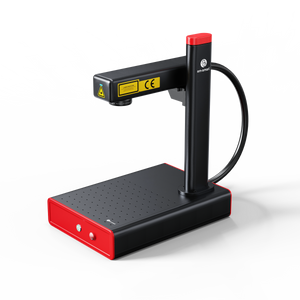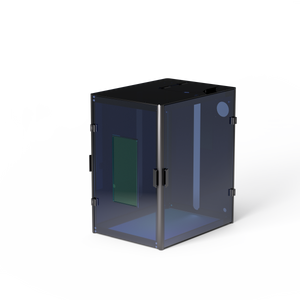Navigating the world of laser engraving and etching can be challenging, particularly when transitioning to sophisticated equipment like a MOPA fiber laser. LightBurn software is a beacon of hope for laser enthusiasts, offering a user-friendly interface and robust control over the laser engraving process. In this blog, we'll walk through the steps to set up LightBurn for a MOPA fiber laser, ensuring you get the best results from your machine.
Q-Switched vs MOPA
Before diving into the setup, it’s crucial to understand what sets MOPA (Master Oscillator Power Amplifier) fiber lasers apart. Unlike Q-Switched lasers, which operate at a fixed pulse duration, MOPA lasers allow for more nuanced control over pulse duration and pulse frequency. The general range of MOPAs can be as low as 2ns or as high as 500ns, allowing highly accurate adjustment of the energy dispersed into the material. Q-Switched lasers are typically not adjustable in this manner, and operate at a fixed duration, typically between 80ns to 140ns.
Step 1: Verify Hardware Compatibility
First things first: ensure your MOPA fiber laser is compatible with LightBurn. As of version 1.4.05, LightBurn supports various fiber laser sources, including Raycus, JPT, IPG, and MAX. And according to the website, LightBurn currently supports galvo (fiber) systems running EzCad2 or EzCad2 Lite software, connected with a USB cable. So, if your laser uses EzCad2 or EzCad2 Lite or falls into the above supported categories, you're good to go. If not, keep an eye on the LightBurn forum and documentation for updates on supported hardware.
Step 2: Install LightBurn
Once you've confirmed compatibility, download and install the latest version of LightBurn. Follow the installation prompts and enter your license key when requested. After installation, open LightBurn to start the setup process.
Step 3: Connect Your Laser


4.2) Laser Type: Select “Fiber” from the pull-down list;
4.3) Fiber Type: Select “IPG_YLPM” from the pull-down list;
4.4) Enable Q-Pulse Width Settings;
4.5) Then you will see “Q-Pulse Width” in the Sub-Layers Setting.


Once you’ve done your parameter settings, you may also save it as a Preset, so that you can simply use it again next time for new tests, without needing to recalibrate each time.

Now that you've set up your MOPA laser with LightBurn as well as parameter configuration, it's time to start engraving. Begin with simple projects to get a feel for the new settings and make adjustments as necessary. Remember that MOPA lasers offer a wide range of possibilities, so take your time to explore the capabilities of your machine.


(Sample done with EM-Smart Laser)
Setting up LightBurn for a MOPA fiber laser involves a blend of technical understanding and creative experimentation. By following the above steps and utilizing resources like the LightBurn forum and documentation, you'll be well on your way to mastering the art of laser engraving and etching with your MOPA fiber laser.



